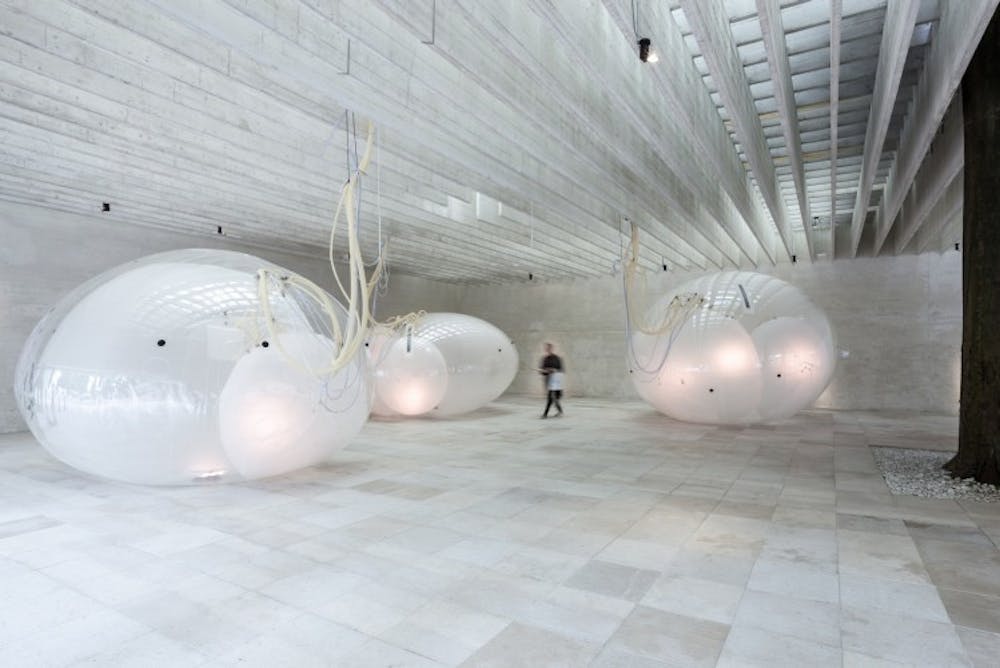The Designs for Different Futures exhibit at the Philadelphia Museum of Art explores the role of design in different aspects of life in the future, in light of the past and the present. Questions of climate change, sustainability, energy, food, and health encompass the show’s wide–ranging focus, and its creators come from varied fields. A few are visual artists, while other contributors to the exhibition are authors, designers, scientists, and game developers.
Some of the pieces intersect with art on a literal level, but some are much more abstract and theoretical. The concept of the exhibition emphasizes the diversity of thought and skills necessary to sustain human life, and the life of our planet in the face of climate change and other global crises.
One particular installation in the exhibition, called Resurrecting the Sublime, created by artists Alexandra Daisy Ginsberg and Sissel Tolaas, and scientists from the biotechnology company Ginkgo Bioworks led by Christina Agapakis, attempted to recreate the fragrances of flowers that have been extinct since the early 20th century. Using DNA from preserved flowers, the artists synthesized and predicted the smell of an environment full of those plants. The installation was a glass room with pods that emanated a beautiful, yet unusual, herby scent. This particular piece raises the question of what extinction means in a world of advanced technology, and perhaps changes our relationship with species that have been lost due to the impact humans have had on the environment.
Another project called Ouroboros Steak questions the validity of claims that "clean meat," or meat grown in laboratories, is a sufficiently ethical and sustainable alternative to agriculturally–sourced meat. Currently, the preparation of lab–grown meat requires fetal bovine serum, taken from the fetal calves of slaughtered, pregnant cows. For Ouroboros Steak, Andrew Pelling, Grace Knight, and Orkan Telhan use human cells and a “human serum made from unusable blood bank byproduct,” according to information provided by the museum. The tongue–in–cheek title of the piece acknowledges the shocking nature of the project, which looks toward an imagined post–clean–meat future.
One of the largest installations in the gallery took the form of a giant, luminescent, plastic bubble that viewers were encouraged to enter, one at a time. The bubble was filled with opaque balloons, lit from the inside, that changed color according to their external temperature. As the level of carbon dioxide in the air increased, the bubble released sighs. That piece, called Another Generosity, was created by Eero Lunden, Ron Aasholm, and Carmen Lee in conjunction with the Lunden Architecture Company in 2018. According to the plaque accompanying it, Another Generosity was meant to mimic “the effect that humans have on the greater planetary atmosphere.” In this surreal installation, the intersection between art and technology was clear. The interactive element and the industrial look of the piece was consistent with common elements of contemporary art. The exhibition also stated that this artwork is meant to “provoke questions and curiosity rather than focus on solution–based responses to sustainability within design.”

Every piece in Designs from Different Futures was from the 21st century, and several were produced in 2019. The collaborative nature of many of the projects, and the necessary line between technology and art that they each walked, made the exhibit an uplifting one, a show replete with the products of imagination, science, and altruism combined. There is a hopefulness in the sense that several incredibly smart and creative individuals have dedicated themselves to raising issues of sustainability and accomplished something.
Designs for Different Futures will be on at the Philadelphia Museum of Art until Mar. 8, 2020.







